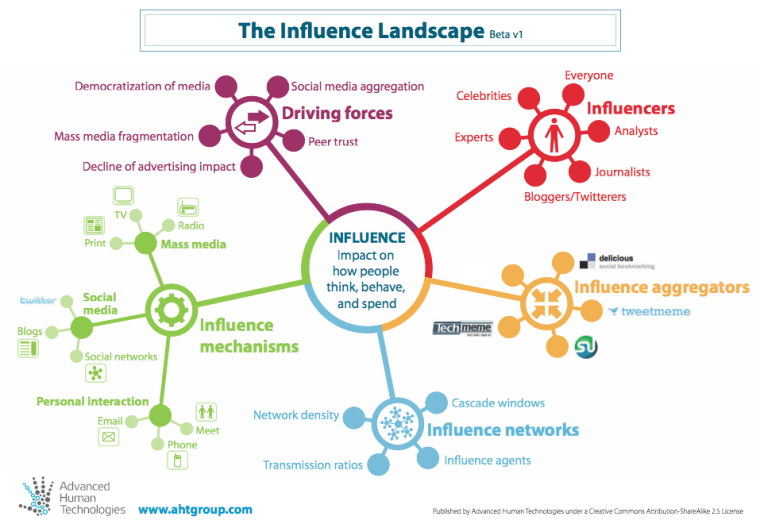I originally got into marketing because I thought it was the most practical application of psychology. To sell or brand a product well, you have to understand people’s psyche, what motivates them and the sociology driving their actions.
While social media is often more of the soft sell, community-building aspect of your marketing, at it’s core, it’s still trying to influence customers and potential brand advocates to like, share, and positively respond to your posts.
When you think about how to do that, you have to think about Robert Cialdini. His six principles of persuasion have been the gospel for everyone from your local car salesman to fundraising organizations to telemarketing firms.
Published way back in 1984, Influence: The Psychology of Persuasion was a mainstay on the New York Times business bestseller’s list and one of Fortune’s “75 Smartest Business Books”. Just as relevant today, the principles he outlined can be applied to every step of your sales and marketing funnel, and are actionable techniques for how to effectively influence and engage your audience.

Here’s how you can use Cialdini’s six pillars of influence in your social media strategy:
Reciprocity
Reciprocity is basically the concept of “you scratch my back, I’ll scratch yours”. Humans inherently feel the need to return favors, pay back debts, and treat others the way you treat them. Rather than just broadcasting messages about your own company, spend some time favoriting, responding to and/or retweeting the influencers in your industry or network. If you do it regularly enough, you’ll reach a tipping point when they start to notice you and feel inclined to return the favor as a mutual respect develops.
It’s the same concept of push versus pull marketing. Make them want to talk about you or at least pique their interest enough to put some effort into finding out who you are and what you’re about.
Commitment (and Consistency)
A lot of blogs and companies are using the principle of commitment already whether they know it or not by offering free trials, white papers, online courses, or tips in the form of e-books or downloads. By providing something of value to potential customers, by simply accepting your offer, those people are more likely to become customers or buy something later because they have already bought into your concept.
However, consistency is just as important as complimentary. You want to set their expectations for what they’ll get by becoming part of your community. Is it contests? Free recipes? Aspirational photos or quotes? Whether it’s posting once a week or once a day, you want to get in a habit so they know when to come back for new information and use one tone consistently.
While it’s always a good idea to experiment with different types of images, questions, and other engagement techniques, you eventually want to develop a style that your audience becomes accustomed to, which is how trust is earned.
Social Proof
Social proof is the concept of “satisfaction in numbers”. Whether we like to admit it or not, the amount of likes, follows, or views a channel has is a visual representation of their power and influence in the space. As humans, we’re more inclined to watch something if we see someone from our personal network has liked it and/or a large number of people think it’s worth sharing. One thing to note though, is that likes from people in your industry are much more valuable than generic volume because the message will be more targeted.
For that reason, to grow my social following, I don’t just follow generic Twitter suggestions. Instead, I look at whom my favorite influencers are following. That way, I am following the people my industry deems authoritative. The more you can connect with people in your niche, the better chance you have at becoming a respectable expert in your community.
Liking
Quite simply, we’re influenced by people we like and respect. But what makes us like certain people more than others? They’re attractive and have similar values. It may be shallow, but it’s human nature. How can this be applied to brands? By having well designed pages with big, glossy images where we can visualize ourselves using that product, or visiting that awesome destination – it’s aspirational.
One easy way to connect with users is to pay extra attention to the “About Us” section of your page. Make them personal. Tell the story of the founders or the employees who are posting. I like when brands say exactly who their tweets are coming from with links to their personal profile. Anything to put a face to a name and give some personalization to the organization.
Authority
Be an expert on the subject you preach, but if you’re not, find a spokesperson or famous person who is. Authority is the reason Proactiv has been so successful using celebrity endorsements. We’re taught to trust professionals. Medical commercials always have a credible doctor on hand to explain prescription benefits because it sounds more legitimate than from an average Joe off the street.
One great way to implement this in your own social media program is to run a co-branding campaign with an influencer in your field. Develop content together, and by attaching their name to an e-book or article, they’ll be more likely to help share it since they have personal buy-in.
Scarcity
The principle of scarcity works best for contests, promotions, and giveaways in that we’re more likely to act if we’re told something is the last one or that a special offer is ending soon. By far the most persuasive technique, by extending a deal for a designated period of time, people are more likely to jump if they know it won’t be around forever.
However, this is also the easiest principle to abuse. You shouldn’t be falsely discounting items or moving costs around because if you get caught, it’s the quickest way to lose trust with your consumers. Reputation is everything and given how long it takes to build credibility online, it’s not worth the risk.

Monthly subscription services have been criticized for doing this – offering cheap or free sign-up offers with monthly fees hidden in the fine print. But if something is legitimately a great deal (especially if it’s limited to people who follow you on social), by all means, promote it.
Final Thoughts
You’re probably using a lot of these principles already, without putting much thought into them. Hone your social media strategy by conscientiously testing one to two tactics at a time to see if it makes a difference. Remember to always be transparent with your audience, and remember: as much as we don’t like to hear it, there really are no shortcuts.
Featured Image: Christophe Pelletier on Flickr
Graph: Marco Derkson on Flickr; Screenshots taken March 2015






